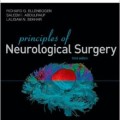دانلود کتاب شبکه های مغز اسپورنز
Networks of the Brain, 1ed
Over the last decade, the study of complex networks has expanded across diverse scientific fields. Increasingly, science is concerned with the structure, behavior, and evolution of complex systems ranging from cells to ecosystems. Modern network approaches are beginning to reveal fundamental principles of brain architecture and function, and in Networks of the Brain, Olaf Sporns describes how the integrative nature of brain function can be illuminated from a complex network perspective. Highlighting the many emerging points of contact between neuroscience and network science, the book serves to introduce network theory to neuroscientists and neuroscience to those working on theoretical network models.
Brain networks span the microscale of individual cells and synapses and the macroscale of cognitive systems and embodied cognition. Sporns emphasizes how networks connect levels of organization in the brain and how they link structure to function. In order to keep the book accessible and focused on the relevance to neuroscience of network approaches, he offers an informal and nonmathematical treatment of the subject. After describing the basic concepts of network theory and the fundamentals of brain connectivity, Sporns discusses how network approaches can reveal principles of brain architecture. He describes new links between network anatomy and function and investigates how networks shape complex brain dynamics and enable adaptive neural computation. The book documents the rapid pace of discovery and innovation while tracing the historical roots of the field.
The study of brain connectivity has already opened new avenues of study in neuroscience. Networks of the Brain offers a synthesis of the sciences of complex networks and the brain that will be an essential foundation for future research.
Review
[ Networks of the Brain]’s most important contribution lies in connecting neuroscience with the science of networks…. This is where we should be looking for solutions to the great mysteries of life and the mind.
(American Scientist)
Networks of the Brain is a unique resource. It defines the nature and scope of one of the newest and most exciting research programs in cognitive neuroscience.
(Minds & Machines)
If you have not discovered this book yet, take a look. Highly recommended. Fascinating.
(Stan Wasserman Complexity and Social Networks Blog)
In Networks of the Brain, Olaf Sporns synthesizes two of the most exciting topics in science today and links the latest breakthroughs to their deep historical roots. A graceful, authoritative, and fascinating book.
(Steven Strogatz, Schurman Professor of Applied Mathematics, Cornell University, and author of Sync)
Sporns’s book is a very important and scholarly contribution to our understanding of brain function. It offers a view of neuroscience that is breathtakingly broad and provides just the sort of perspective needed if we are to integrate knowledge of form cells, social groups, and everything in between. It lays out the evidence for a real paradigm shift in how we must pursue our understanding of the brain’s workings.
(Marcus Raichle, Professor of Radiology, Neurology, Neurobiology and Biomedical Engineering, Washington University in St. Louis)
This excellent book instills a sense of excitement about understanding the brain in terms of network theory. Despite the fact it does not contain a single equation, one comes away from Sporns’s book with a sense of insight and perspective rarely attained by treatments of this sort. In short, this is a resource of conceptual treasures for anyone interested in a modern understanding of the brain. It will be appreciated by students and seasoned academics alike.
(Karl Friston, Wellcome Trust Centre for Neuroimaging, University College London)
Written engagingly by a master at the top of his game, Sporns’s book unites neural structure, function, connectivity, and dynamics into a single, quantitative, and coherent framework — brain network science that goes a long way toward understanding the dynamic patterns of the brain that underlie behavior and cognition. Essential for the transdisciplinary neuroscientist of the future.
(J.A. Scott Kelso, author of Dynamic Patterns: The Self-Organization of Brain and Behavior and The Complementary Nature)
About the Author
Olaf Sporns is Provost Professor and Head of the Computational Cognitive Neuroscience Laboratory in the Department of Psychological and Brain Sciences at Indiana University. He is the author of Networks of the Brain (MIT Press, 2010).
Contents
۱ Introduction: Why Networks?
۲ Network Measures and Architectures
۳ Brain Networks: Structure and Dynamics
۴ A Network Perspective on Neuroanatomy
۵ Mapping Cells, Circuits, and Systems
۶ The Brain’s Small World: Motifs, Modules, and Hubs
۷ Economy, Efficiency, and Evolution
۸ Dynamic Patterns in Spontaneous Neural Activity
۹ Networks for Cognition
۱۰ Brain Network Disease
۱۱ Network Growth and Development
۱۲ Dynamics: Stability and Diversity
۱۳ Neural Complexity
۱۴ Brain and Body
لینک کوتاه : https://bookbaz.ir/?p=15884
نویسنده : Olaf Sporns
ناشر : The MIT Press; 1 edition
سال انتشار : 2011
زبان کتاب : انگلیسی
نوع فایل : PDF
تعداد صفحات : 433
(ISBN) شابک : 0262014696
قیمت کتاب درآمازون : $45.57
حجم فایل : 21 MB





































































































































